Why meat can't be replaced (Patreon)
Content
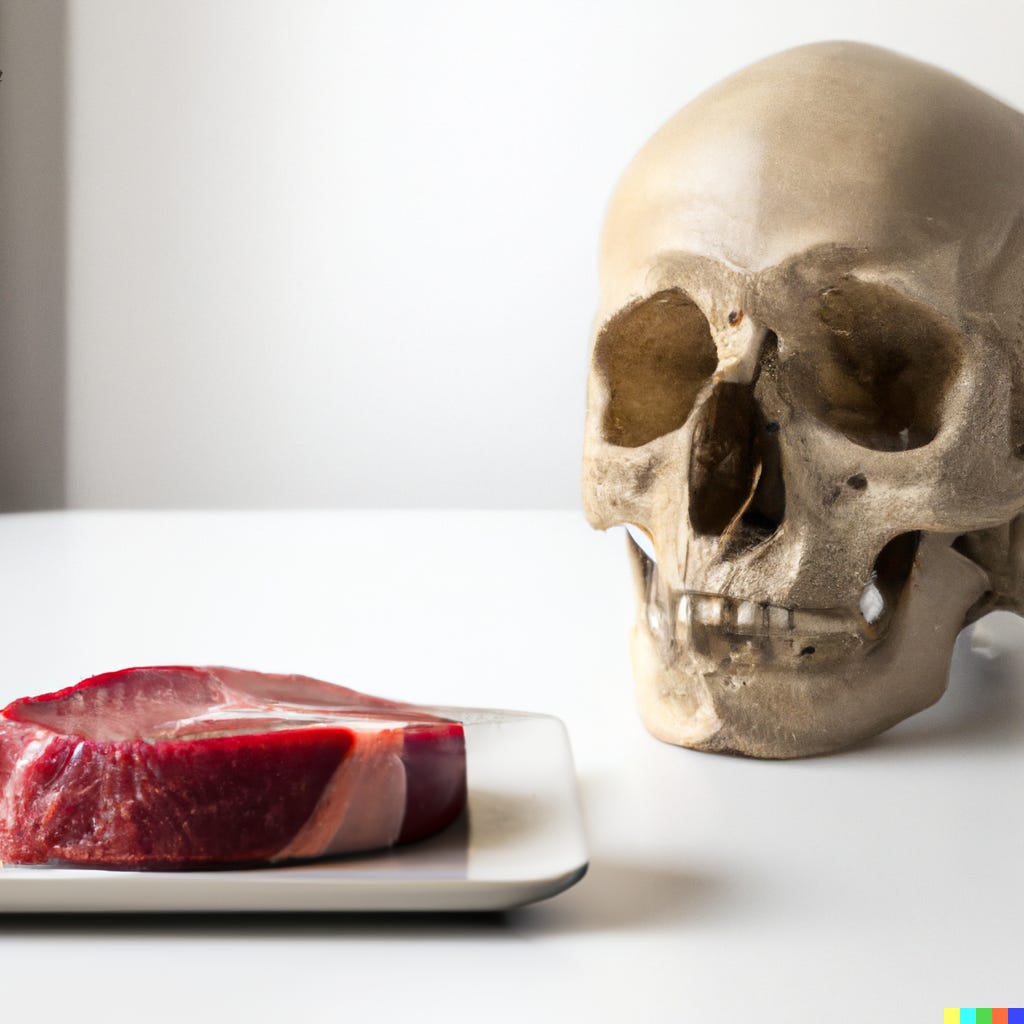 </figure>
</figure>Can meat be replaced? To some, the answer might seem like an obvious yes if you’re convinced of the viability of a vegan diet. Maker of the Beyond Burger, Ethan Brown claims that he can even replace meat with a single product.
What it means is that we’ve figured out a way to use science and technology to take all the core parts of meat, the amino acids, the lipids, trace minerals, the vitamins, combine those with water in the architecture of animal protein.
Perhaps a better question then would be, why do we even need meat in the first place? We need to rewind a bit.
In 1937, Dr. Earnest Hooton of Harvard University theorized that the declining health of our teeth was an indicator that the health of humanity as a whole was on the decline. He went as far as to say that if we can’t solve the root cause of crooked teeth, “the course of human evolution will lead down to extinction.” While that may sound dramatic, how can we say that we have totally nailed human nutrition if we can’t even get our mouths to form correctly? Any archeologist can tell you that there has been a drastic change in the health of faces and mouths. Paleoanthropologist Daniel Lieberman says in his book The Evolution of the Human Head that "...jaws and faces do not grow to the same size that they used to...”
<figure>Japanese skull from sometime before 300BCE (left), Japanese skull from sometime after 300BCE but before 250AD - after rice farming commenced(right)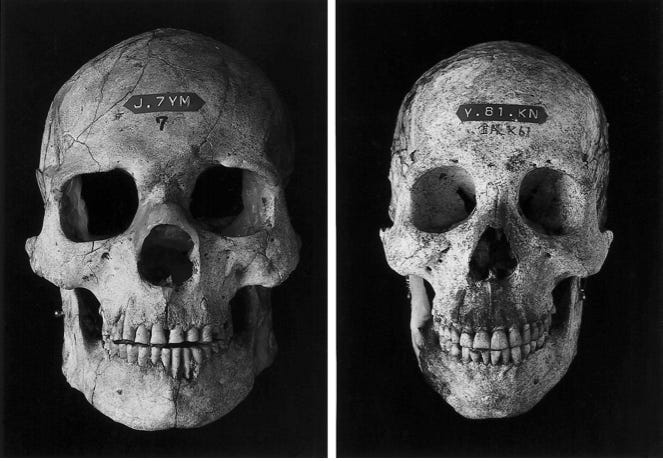 </figure><figure>Seminole indian skulls
</figure><figure>Seminole indian skulls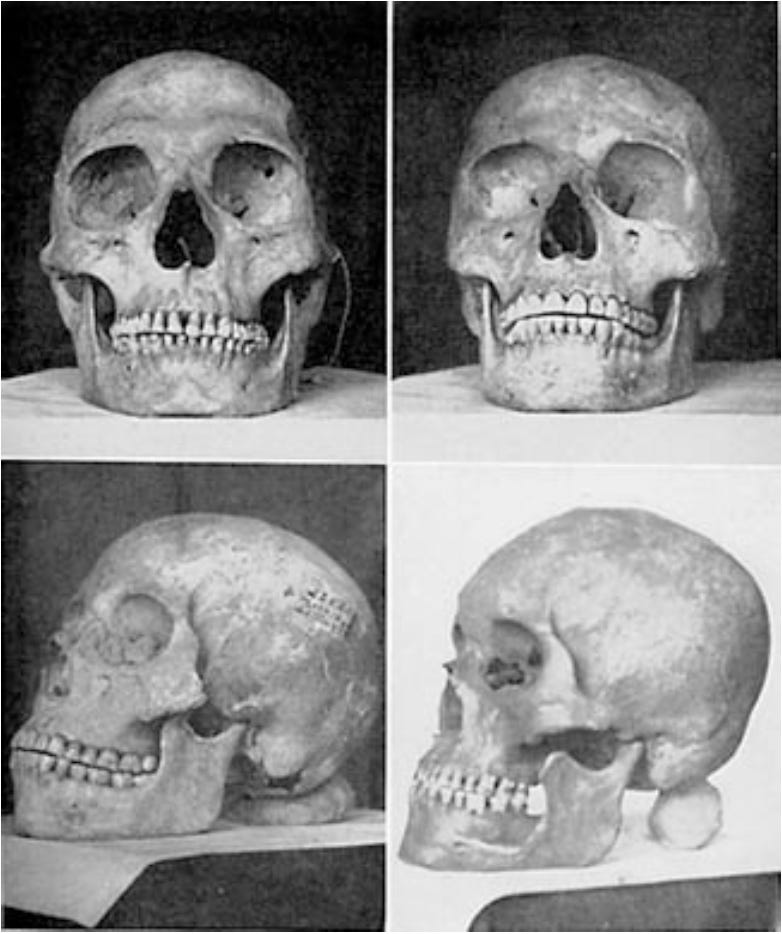 </figure><figure>Modern human skull
</figure><figure>Modern human skull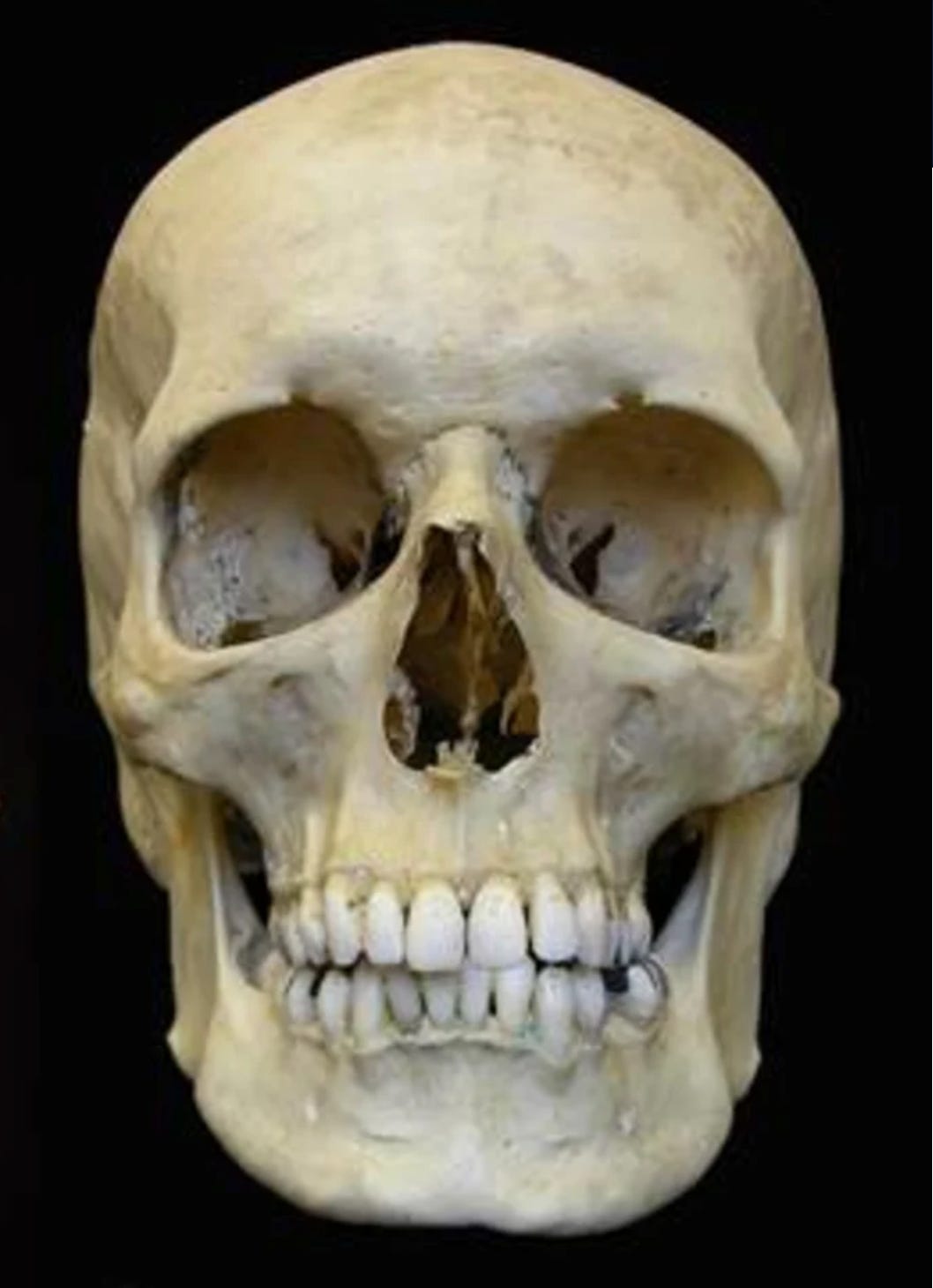 </figure>
</figure>Skulls have revealed that for a long time it was the normal for humans to have broad mouths that allowed for all the teeth to come in straight. As we transitioned to a more “modern” diet we ended up with smaller mouths … and more crooked teeth. Why crooked teeth happens is not much of a mystery - there’s simply not enough room for the teeth to come in, so they become crooked as they are squeezed into a tight space.
<figure>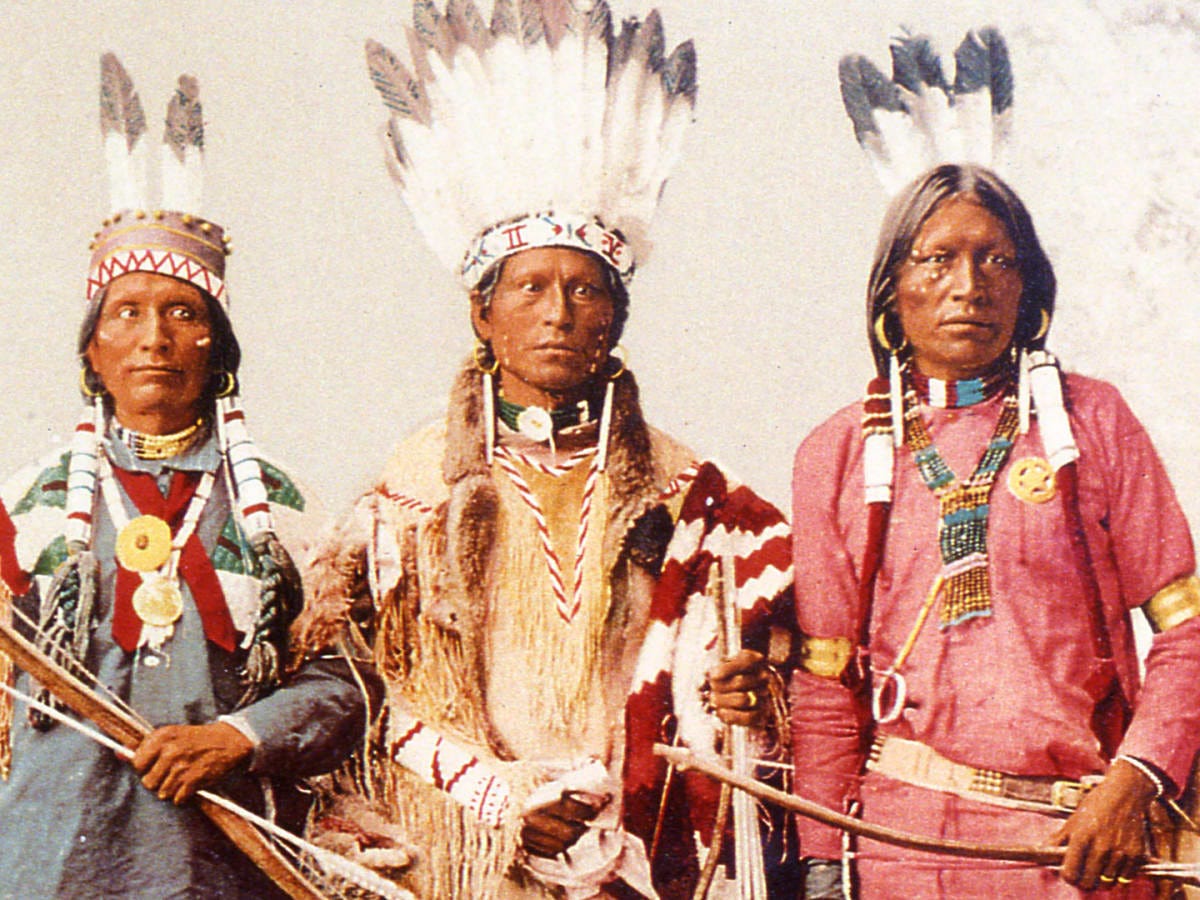 </figure><figure>
</figure><figure> </figure>
</figure>Take a look at these Native Americans’ broad faces - there is plenty room for all of their teeth. A broad face suggests a wide dental arch.
<figure>Smaller dental arch, broader dental arch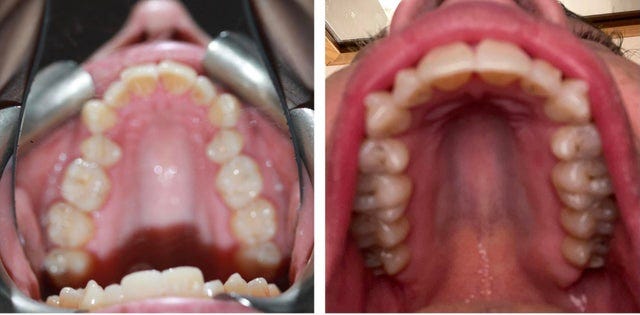 </figure><figure>
</figure><figure>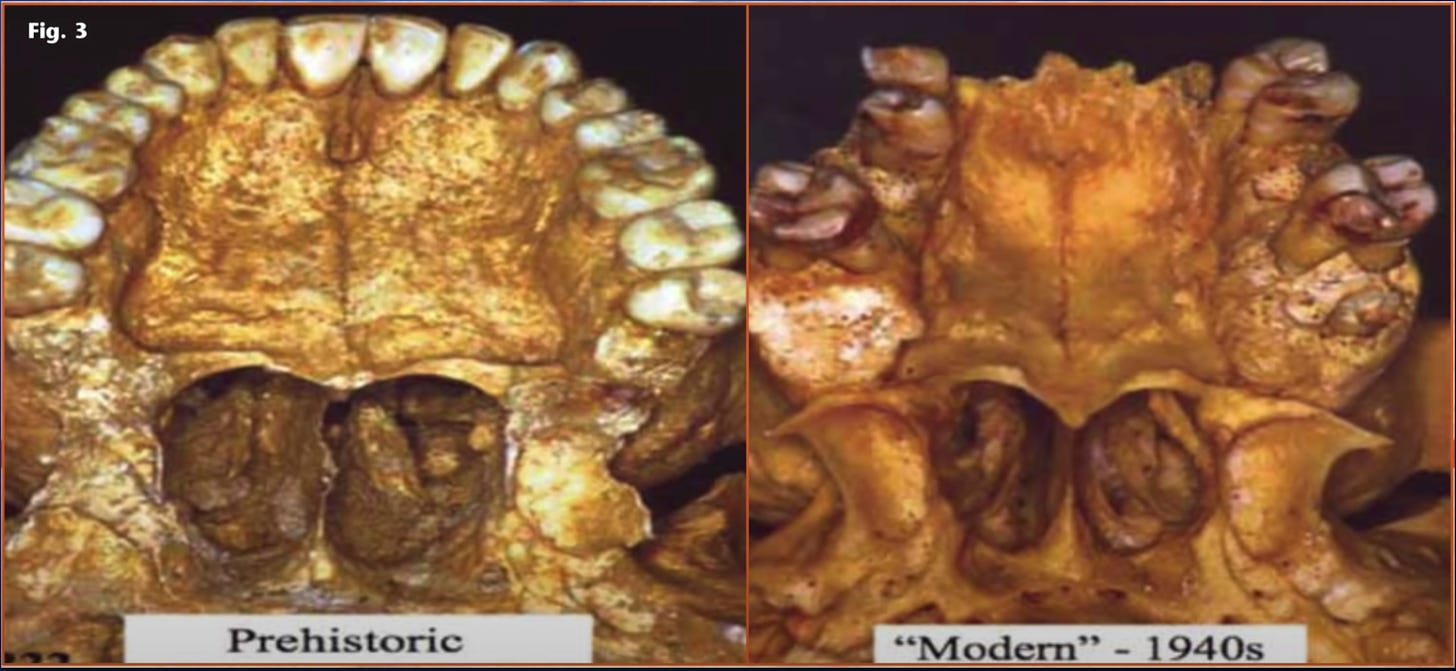 </figure>
</figure>Profitt’s 1994 textbook on orthodontics said that as high as 2/3rds of Americans have crooked teeth. Based on studies from 2009 to 2019, the prevalence of children developing crooked teeth is 56% worldwide with a prevalence of 72% in Europe and 53% in America. *Hard to say if that’s an improvement in the American situation - it could simply be that the methods in Profitt’s textbook and that study are different.
<figure>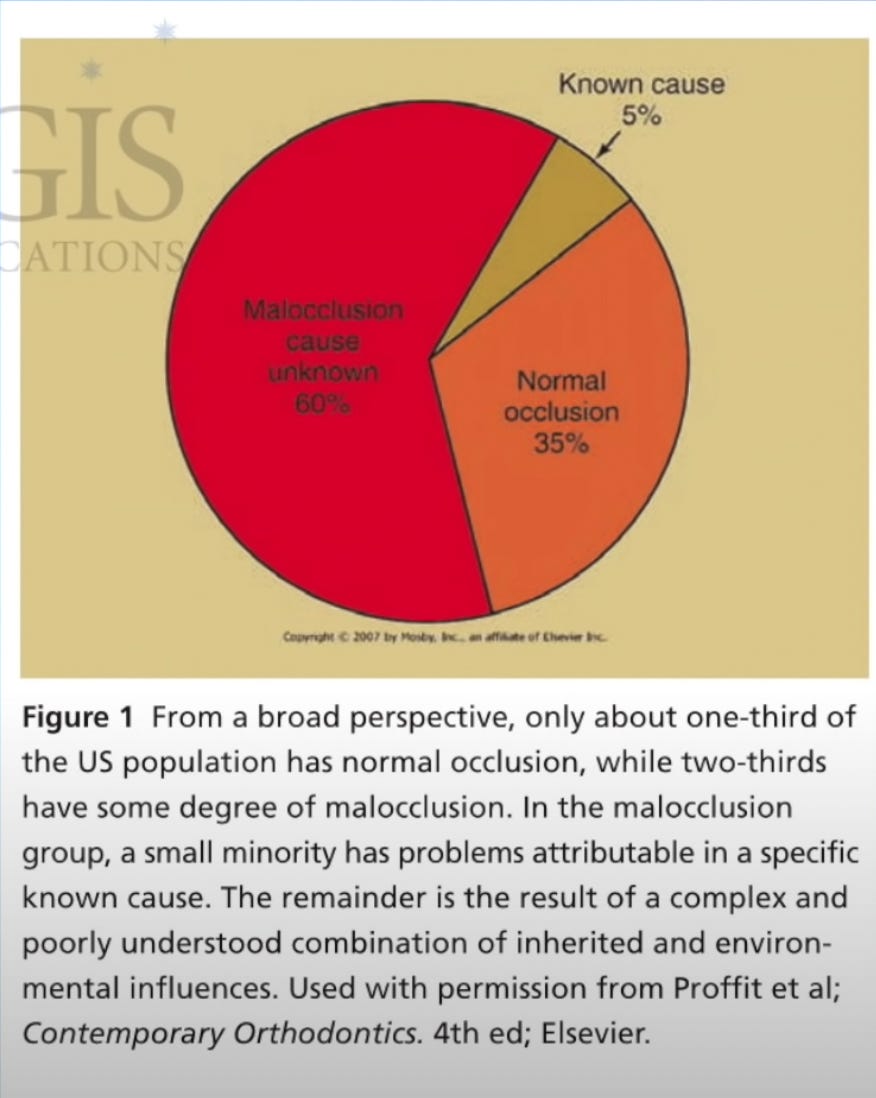 </figure>
</figure>So the question becomes: what could cause the dental arch to become small?
A respected dentist widely published in peer-review journals, Dr. Weston Price, was taking note of this trend. He noticed that during his career as a dentist, people’s teeth were becoming more crooked and people were getting more cavities.
Dr. Price spent 10 years in the early 1900’s traveling to 14 different countries to study peoples who were living on diets untampered by modern foodstuffs like refined grains, sugar or vegetable oil. He found a very clear pattern - the people who were living on their traditional diet were in good health and had notably good dental formation - they had broad dental arches, straight teeth and very little cavities. His work showed that the crowding of teeth couldn’t be due to genes, because often he found pairs of people from the same region where one group on traditional foods had great teeth, and another group eating modern foods had cavity ridden, crooked teeth. The people who switched to the modern food had anywhere from 5 times to more than 30 times the incidence of cavities of their counterparts.(S)
<figure>Australian aborigines before (left) and after (right) the introduction of modern foods </figure><figure>People living on traditional diets
</figure><figure>People living on traditional diets </figure><figure>People living on modern diets
</figure><figure>People living on modern diets </figure>
</figure>Loading...
Dr. Price wasn’t so concerned that sugar, processed grains or vegetable fats were necessarily evil, but that they displaced other foods - namely animal foods that were high in vital nutrients, namely the fat soluble vitamins A, D, E and K2. Whether it be the people of the outer hebrides who ate cod heads and livers, or the eskimos who ate the various organs of large animals and the eggs of fish, or the people of New Guinea who ate dugongs, or the people of the Andean sierras who llamas and alpacas - Wherever he went, he found that these peoples eating a traditional diet prized some form of marine or animal foods. These foods happened to be very nutrient dense.
The reason this is relevant is that these prized fat soluble vitamins are very difficult to get in abundance from plants.
Vitamin A
Many people understand that vitamin A comes from vegetables like carrots or sweet potatoes - but this isn’t actual vitamin A, it’s a substance called beta carotene that is converted into vitamin A and the conversion rate is very poor - about 12:1. Not only that, the more you eat, the worse the conversion rate becomes.(S) Further, depending on your genes, your conversion rate may be very low - like me, thanks to a SNP on on my BCMO1 gene. What you want is actual preformed vitamin A. You can only get it from animal foods or a synthetic vitamin.
Vitamin D3
Vitamin D3 is pretty much only found in animal foods but there are some exceptions like mushrooms and algae. On this note, peoples of the high andes carried dried kelp in their knapsacks which is particularly nutritious compared to other plants - another indicator of their devotion to nutrient dense foods.
Vitamin K2
Vitamin K2 can indeed be acquired from a few plant-based fermented foods like sauerkraut and nattō. Nattō in fact has a bunch of Vitamin K2. Though should a culture not be familiar with the benefits of fermented foods, they would have gotten K2 from goose liver, chicken liver, beef liver, beef heart, duck breast, eel, whole fat milk, butter, egg yolks et cetera.(S, S2)
Weston Price really emphasized that a diet dense in vital nutrients like these were important not just for robust facial development, but for development of the overall skeleton.
<figure> </figure>
</figure>While some may argue that Price’s ideas are dated, it is interesting to note that the Dutch are competing with Montenegrins for the tallest people in the world title and they are 2nd and 3rd on the list for the most milk consumed per capita in the world. According to science.org, “scientists assume that a diet rich in milk and meat played a major role” in the drastic increase in height of the Dutch. A study of 105 countries in the journal Economics & Human Biology noted that animal food, particularly dairy, most correlated with increases in height. Further evidence that not just genes, but nutrition has a huge influence on height: children of Japanese immigrants to Hawaii grew much taller than their parents.(S)
So why can’t we replace animal foods?
Just because animal foods have been prized, sought after, and seem to have important physiological functions doesn’t mean they can’t be replaced. People arguing against a plants only diet may say that these diets are lackluster in nutrients like DHA, Choline, Zinc, Iron, Carnitine, Carnosine, Anserine, Taurine… but why can’t these just be added to an Impossible Burger for example? Why can’t we replace food with the components of food?
<figure>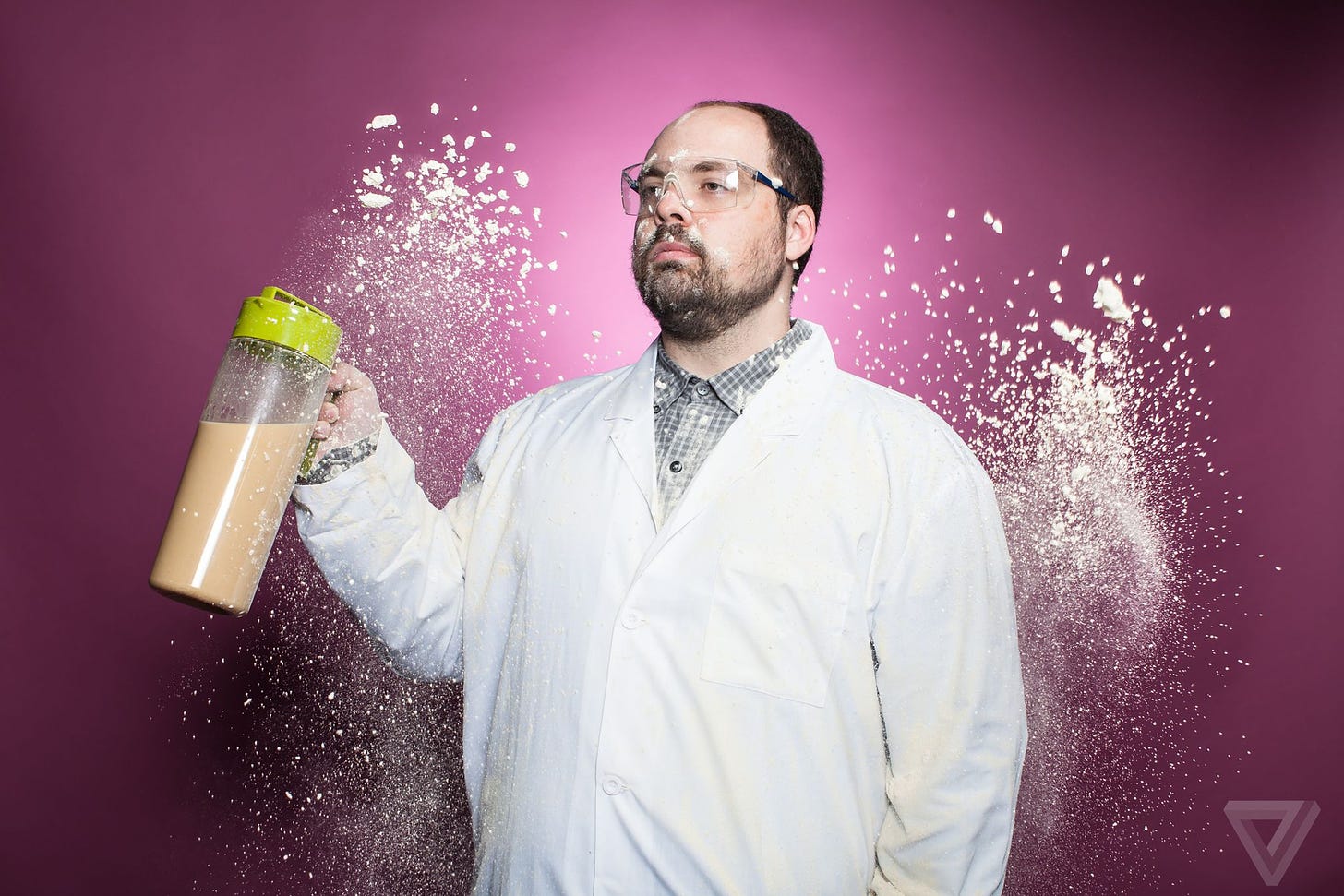 </figure>
</figure>This is a good point. After all, people have been trying to do this for over a 100 years. More recently with Soylent and Huel, but people have been trying to recreate a particularly vital animal based food since at least 1865. This was when the first infant formula, an attempted replacement for breast milk, was invented. By 1883, there were 27 different patented brands of infant food - these all lacked valuable nutrients like protein, vitamins and minerals. 40 years later, the formulas of the 1920’s were more advanced, but still lacked vital nutrients. Though, as quality and regulations improved, infant formula came to be widely regarded as a safe substitute for breastmilk which lead to a steady decline in breastfeeding until in the early 1970’s. Then, only 25% of babies were getting any breast milk. After that, the rates of breastfeeding went up as the benefits were more widely understood. Research has demonstrated increasing trends of formula-fed children developing eczema, asthma and allergic reactions to food as well as diabetes and obesity.(S)
<figure>“Nestle’s food is best for babies”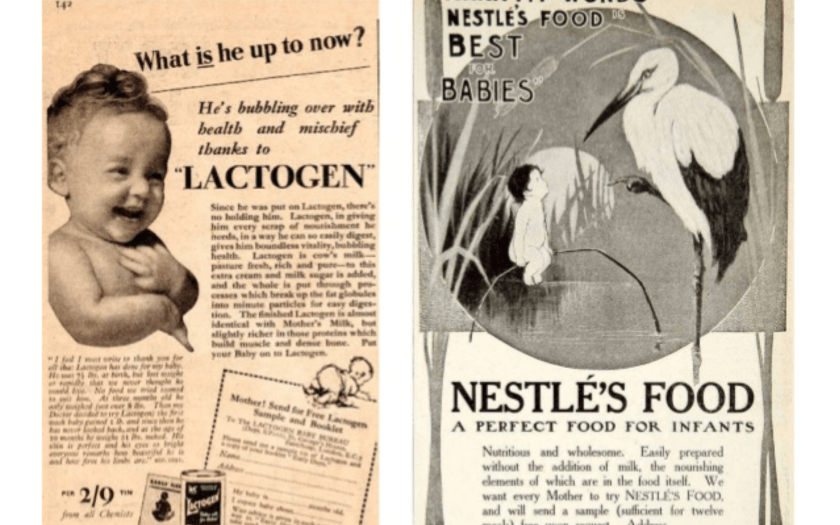 </figure>
</figure>Nestle is notorious for going as far as to claim that not only that their product was as good as breast milk, but that it was better.
Nowadays 1 in 5 US infants receive formula in their 1st 48 hours. Globally, infant formula is a 56 billion dollar industry and continues to grow. Dr. Chaeyoung Shin, founder of infant formula company NAMUH says: “The biggest driver to the formula market is the increase in the number of working women.”
Despite over 100 years of infant formula development, AAP, WHO, and UNICEF all recommend exclusive breastfeeding for the first six months of life.
If a mother can’t breastfeed or get donor milk, of course modern infant formula is basically a miracle. But the point is that as even a representative of Abbott, a leading infant formula manufacturer admits: despite their almost 100 years of trying to, “to mimic and replicate breast milk is not possible.” Formula manufacturers are constantly discovering new compounds that should be added to formula in an attempt to make it as good as real breast milk - As recent as 2016, a sugar important to supporting the health of the microbiome baby was added to some formulas. Only 4 years ago a 2019 paper confirmed that lactoferrin and milk fat globule membrane - a component often missing from infant formulas improved the brain growth of babies.
Dr. Rhonda Patrick has done an excellent overview on her channel FoundMyFitness about just how complex breast milk is. It contains:
・415 different proteins (s)
・200 different human milk oligosaccharides (s) for building a healthy infant gut and other benefits
・200 different fatty acids encapsulated in the milk fat globule membrane (s)
・4 different types of growth factors
Other important components of breast milk include:
・Colostrum
・immune cells
・stem cells to help the baby grow new cells like those of the liver, pancreas and brain (see more: microchimerism)
・Nucleotides that help the baby sleep
・Sphingomyelins important for central nervous system myelinization which are present in the milk fat globule membrane(S)
・Tons of bacteria that support the development of a healthy microbiome in the baby(s)
・Various antimicrobial agents, anti-inflammatory agents as well as compounds or enzymes that kill invading microorganisms.(s)
Obviously breast milk is a very high bar and a newborn will have far more sensitive requirements than an adult or even a child. However, it’s an example of professionals struggling to find a 1:1 replacement of a natural food. Let’s look at some more.
Margarine
<figure> </figure>
</figure>In the 1860’s, Emperor Napoleon III, wanted a substitute for butter, which was expensive and in short supply for his poor population and armed forces. He offered a reward. In response Margarine was invented in France in 1869 by a French chemist named Hippolyte Mège-Mouriès. A butter-like substance from beef fat and milk, which he called oleomargarine or by his name Mege-Mouries. This started a long history of the reformulation of margarine which eventually came to be made entirely out of vegetable oils. In 1960’s it was marketed as good as butter because it tastes like it. Along the way, it became hydrogenated and rich in trans fats.
<figure>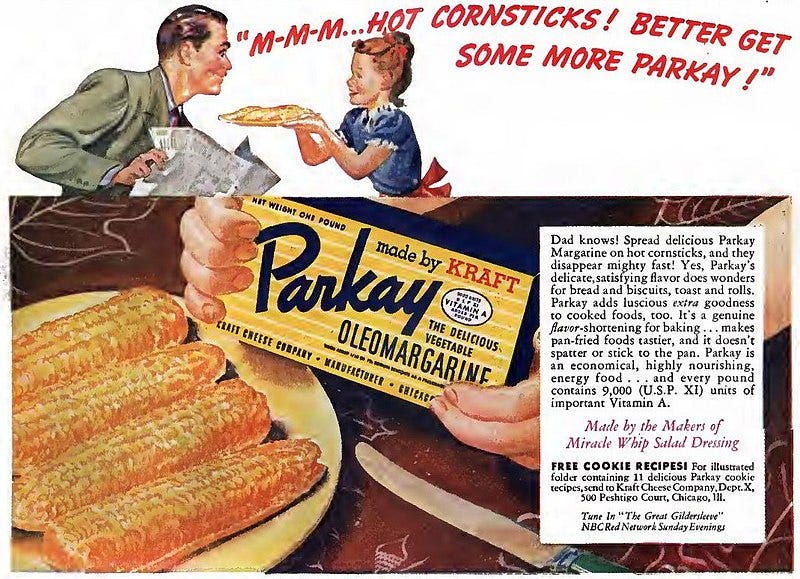 </figure>
</figure>Trans fats are recognized as very unhealthy fats and have been linked to a number of health problems, including heart disease, stroke, and type 2 diabetes. Ironically while margarine was presented as a substitute for butter that is more healthy for the heart, it turns out trans fats reduce levels of the HDL “good” cholesterol, increasing your risk for heart disease. (S) In 2018 the WHO launched a plan to eliminate trans fat from the global food supply. And this was only acted upon by the FDA in 2020. (s) As early as 1956, there were suggestions in the scientific literature that trans fats could be a cause of the large increase in coronary artery disease. For decades the concerns remained largely unaddressed. (s) We had evidence that trans fats are awful for health for over sixty years before anything was formally done about it.
So here’s the point: Weston Price would have said that margarine is bad because it’s not a suitable replacement for butter - margarine pushed butter and its nourishing fat soluble vitamins out of the diet. But what he might not have realized was that this replacement didn’t just remove health benefits, it also added negative health effects on top.
<figure>“A man taking a B12 supplement while eating broccoli at a restaurant in sunny lighting, digital art” </figure>
</figure>B12
As it should be common knowledge amongst vegans that B12 supplementation is necessary, I thought it would be interesting to take a look at their B12 status because this should indicate whether the supplements are working how they are supposed to. After all, B12 is just one component exclusive to animal foods - why would it matter whether you get B12 in the form of a steak or in the form of a pill? Well, one study looking at B12 status in vegetarians and vegans found that 7% of vegetarians and 52% of vegans were B12 deficient. (S) However, in another study where they used a more sensitive testing method - they found a whopping 77% of vegetarians and 92% of vegans to be deficient in B12. (S) B12 is a good example of us assuming that all that we need is a particular component, but it turns out that just providing the component doesn’t render the same effect.
<figure> </figure>
</figure>Iron
Vegetarians have a high prevalence of depleted iron stores. A higher proportion of vegetarians, compared to nonvegetarians, had iron deficiency anemia. This is especially true for premenopausal vegetarian women.(S) Now it’s fair to assume the necessity of iron is much lower on a vegetarian diet. However, according to a 2012 study, despite taking prenatal iron supplements, 58% of the woman had iron levels below normal. It is understood that heme-iron (which is only derived from animal sources) is much better absorbed than non-heme iron in general, but that study also notes that during pregnancy is there is a “preferential use” of animal-based heme iron as opposed to a plant-based non-heme iron. So it seems the way components of food work also depends on the context and form of the component.
Calcium
Calcium is a great example of why the form you get nutrients in matters. It was understood that dietary calcium reduces the risk of heart disease, so it was assumed that calcium supplements must provide similar benefits. Yet, study as recent as 2016 found that supplemental calcium rendered the opposite effect - it increased heart disease risk. This is not because supplemental calcium is evil, but the explanation is thought to be that calcium is processed quite differently when you ingest a concentrated lump of it - it elicits a spike in your blood calcium levels. On the other hand when you get calcium that is spread out in your food, it will be more slowly released into the bloodstream.
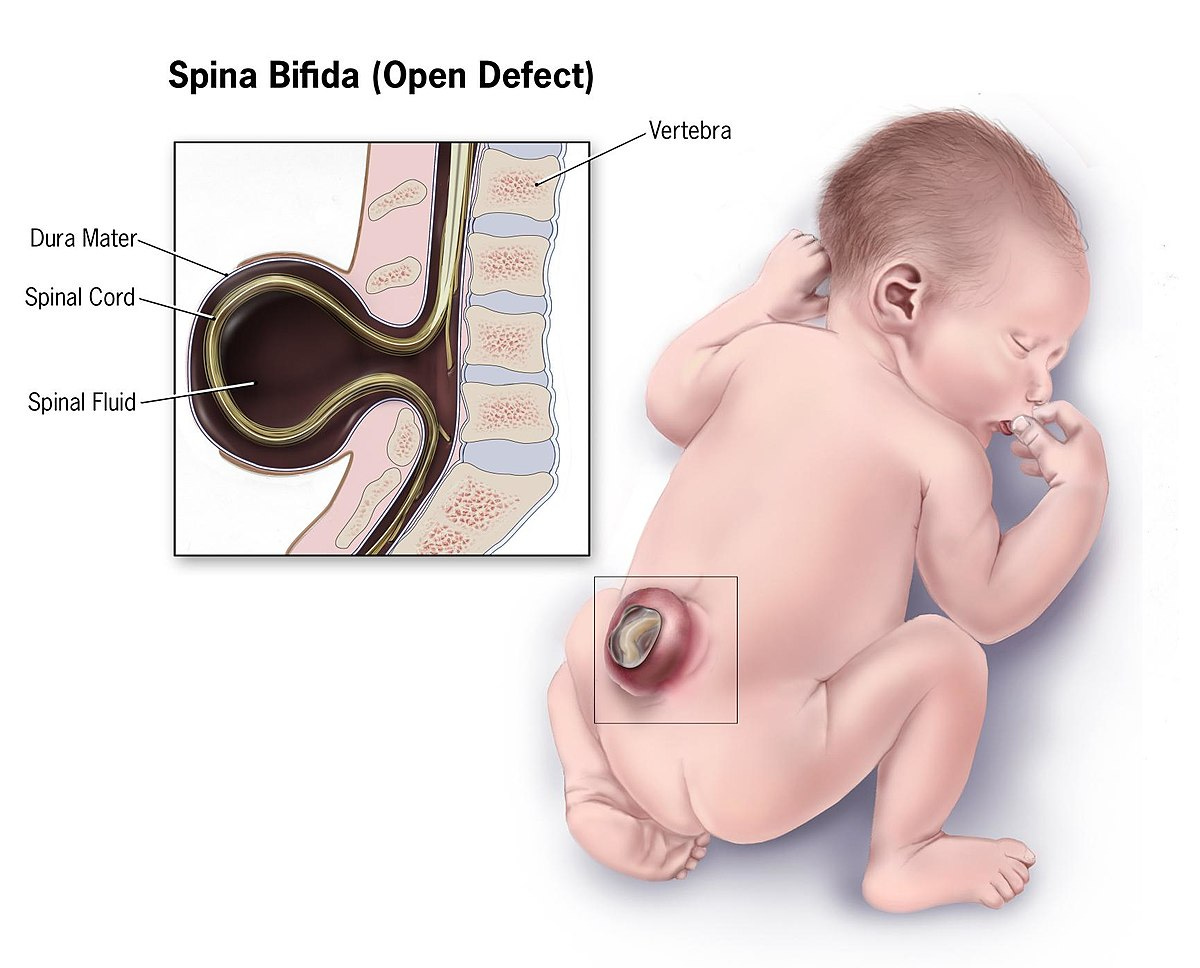 </figure>
</figure>Folate
Folate seemed to be a done deal for a while - it was learned that a woman having insufficient folate levels before a pregnancy could give birth to a baby with a neural tube defect. So, it seemed fortification was the best solution. It is required by Australian law that wheat flour be fortified with a synthetic compound called folic acid that can be transformed in the body into folate. However this didn’t seem to be a complete solution to this problem, as this 2006 paper’s title suggests: Neural tube defects and folate: case far from closed. In 2009, it came to light that while sure the common supplement, synthetic folic acid, can usually prevent a folate deficiency… the way it’s processed in the liver means it actually prevents you from reaching optimal folate levels. It’s like filling your wallet with quarters instead of bills. You can hold some money … just not that much as you could. Plus, if you have a certain modification in the MTHFR gene - the methylenetetrahydrofolate reductase gene, folic acid is even less useful for you. According to 2011 paper from Harvard, “40% to 60% of the population has genetic polymorphisms that impair the conversion of supplemental folic acid to its active form, l-methylfolate.” The form of folate supplement that is much more beneficial and doesn’t have the same problems as folic acid is called tetramethylhydrofolate or just methylfolate. This started to come to light at least by 2009 yet many prenatal vitamins still contain folic acid, not methylfolate.
 </figure>
</figure>Don’t know what exact nutrients rats need? Just throw in random stuff.
Since the early 1900’s, scientists were trying to standardize rat diets so that they could be used as control diets in nutrition studies. (s) In the 1940s, various rodent diets were proposed. These early diet formulations were very nutritionally inadequate.
Over the years they puzzled out a couple important things like: A deficiency of essential fatty acids lead to a “plethora” of physiological detriments like diminished growth, skin inflammation, necrosis of the tail, fatty liver, impaired reproduction and several other issues.(s)
Finally, a widely accepted, open-source formula diet for rats and mice, was published in 1977 in The Journal of Nutrition. Three years later the formula was modified. This formula, known as the AIN-76A (s), provided the precise quantity of purified ingredients that seemed to meet all nutrient requirements known at that time, becoming the standard for rodent model nutrition studies.
A 1989 Workshop recommended revising the diet again to include several seemingly random components including chromium, fluoride, boron, vanadium, arsenic, nickel, lithium, tin and silicon. Why? Well, they didn’t actually know why these helped. All they knew was that without these, the rats didn’t grow properly, so they chucked them in.
Come 1993, they had changed the formula to increase the levels of vitamin E (probably to counteract all the vegetable oil they were giving the rats) as well as vitamin B12, and they increased Vitamin K 10 times to prevent hemorrhaging (S) They reduced phosphorus so the female rats’ kidneys wouldn’t calcify; they also reduced the manganese by 1/5th. At some point they had learned that the massive amounts of sugar in the diets were causing hyperlipidemia and lesions in the liver so they swapped some of that sugar for corn starch.
Despite almost 100 years of trial and error, a March 2021 commentary published in The Journal of Nutrition, “Should the AIN-93 Rodent Diet Formulas Be Revised?,” makes the case that the rat food formula still needs to be updated. The authors claim the formulations for dietary fiber, carbohydrates, fat, and energy density don’t “fully reflect our understanding of animal nutrition.”
<figure>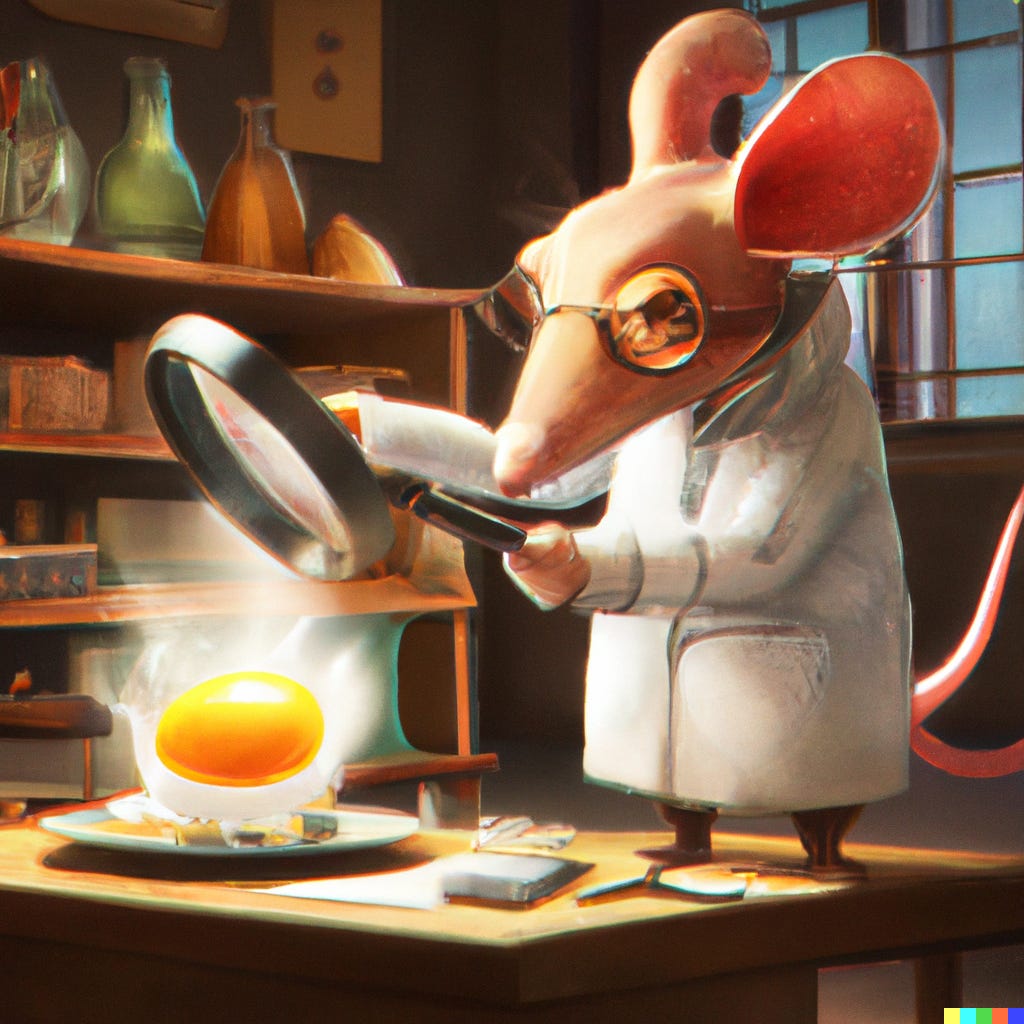 </figure>
</figure>Of course we are not rats, but they’re a good model of just how hard it is to narrow down what exact components make for a perfect diet. Even with humans, I think most people would have the impression that we have had everything pretty much figured out. However just barely in 1998, Choline was recognized as an essential nutrient. The significance of a lack of choline slowly revealed itself to us in the form of liver disease, atherosclerosis and some neurological disorders. Pregnant mothers need even more choline than the average person so their baby can have proper neurological development. Even just last year, more details on the importance of choline came to light. A new Cornell study found that seven-year-old children performed better on a challenging task requiring sustained attention if their mothers consumed twice the recommended amount of choline during their pregnancy. Again, this was just in 2022. Imagine how complex that is to tease out - you could have two babies that seem perfectly healthy at birth and you could make an assumption based on that about how much choline is necessary, but the extent of choline benefits don’t reveal themselves until seven years later. The most abundant sources of choline are chicken egg yolks, fish eggs, and organ meats like liver or kidneys. You could get 100% of your choline needs with just three egg yolks, but you can also muscle down 725 grams or 1.5 lbs of cooked shiitake mushooms (not raw weight) to get enough choline. Also if you’re going to supplement with choline, you better keep in mind that egg yolk choline is more efficiently absorbed than choline bitartrate.
<figure> </figure>
</figure>It took a girl suffering a gunshot wound to the stomach in 1978 for us to understand the importance of essential fatty acids for humans. The girl couldn’t digest food properly for months so she had to have liquid nutrition injected directly into her bloodstream (total parenteral nutrition). The initial formula left her with neurological symptoms until they switched her to a formula with sufficient omega-3 fatty acids.
Long story short, a diet that completely eliminates animal foods in favor of plant-based sources of nutrition is most definitely an experiment. But hold up…
What exactly is the food that is being replaced?
Some people might view plant-based nutrition as the natural, ‘original’ diet of humans, but there are tons of lines of evidence proving that could not have been the case. Since I’m sure most of you are familiar with this, I’ll just offer 3 brief examples:
<figure>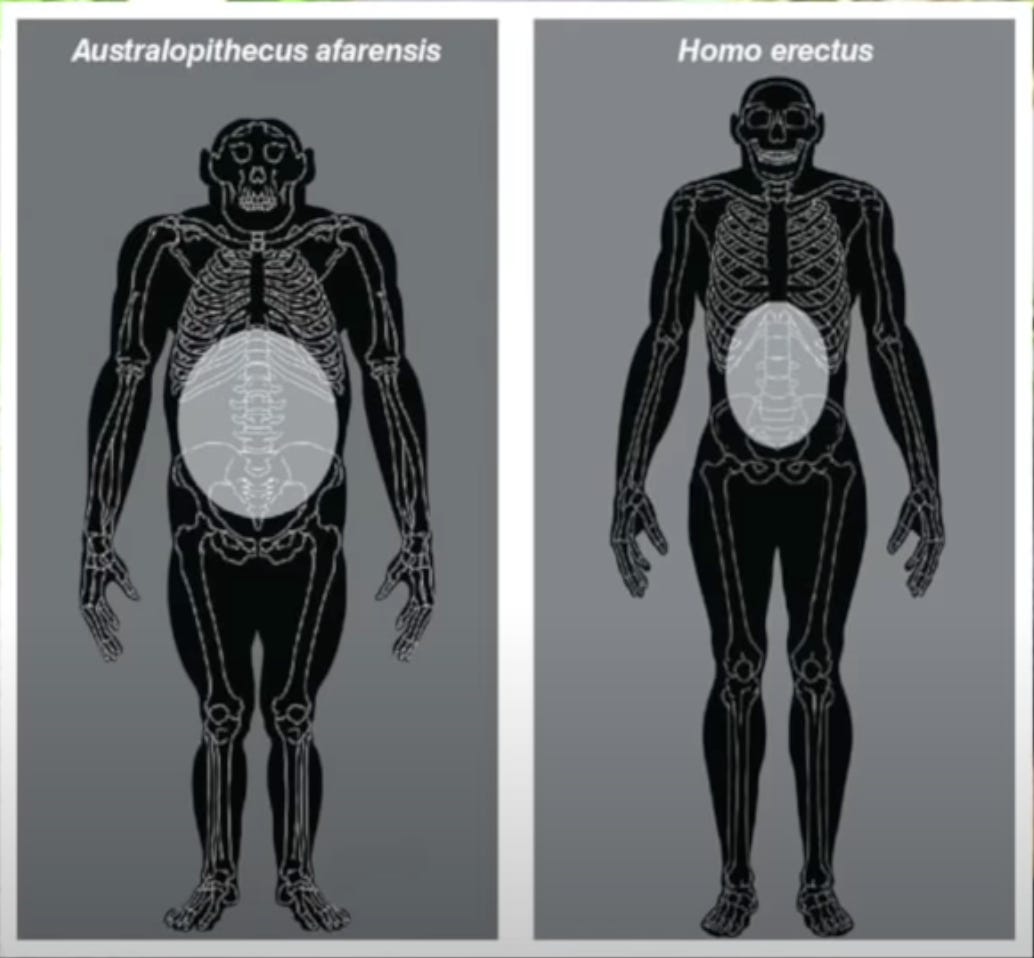 </figure>
</figure>(1) The brain is a disproportionately energy expensive organ, hogging 20% of our oxygen and calories.(S) Our guts (also energy expensive) shrank in size to allocate more resources to the brain.(S) Thus, the more energy efficient animal fat became favored over fibrous plants that took forever to chew and digest. (If you’re under the impression that cooking made our brains large, watch this.)
(2) A stable isotope study on the first modern humans revealed that Upper Pleistocene modern humans ate any animals they could get their hands on: mammoth, reindeer, rhinoceros, bovines, horses, cave bears.(S)
(3) As we all know, a vegan diet requires a variety of plants to be (allegedly) nutritionally complete. Modern fruits and vegetables are nothing like they were. They had far less actually edible material and far more fiber and seeds. Paleoanthropologist daniel Lieberman has said that the sweetest fruit available would have been no sweeter than a modern day carrot. (S) Here’s a nifty graphic on what some commonly consumed plants would have looked like before domestication:
<figure>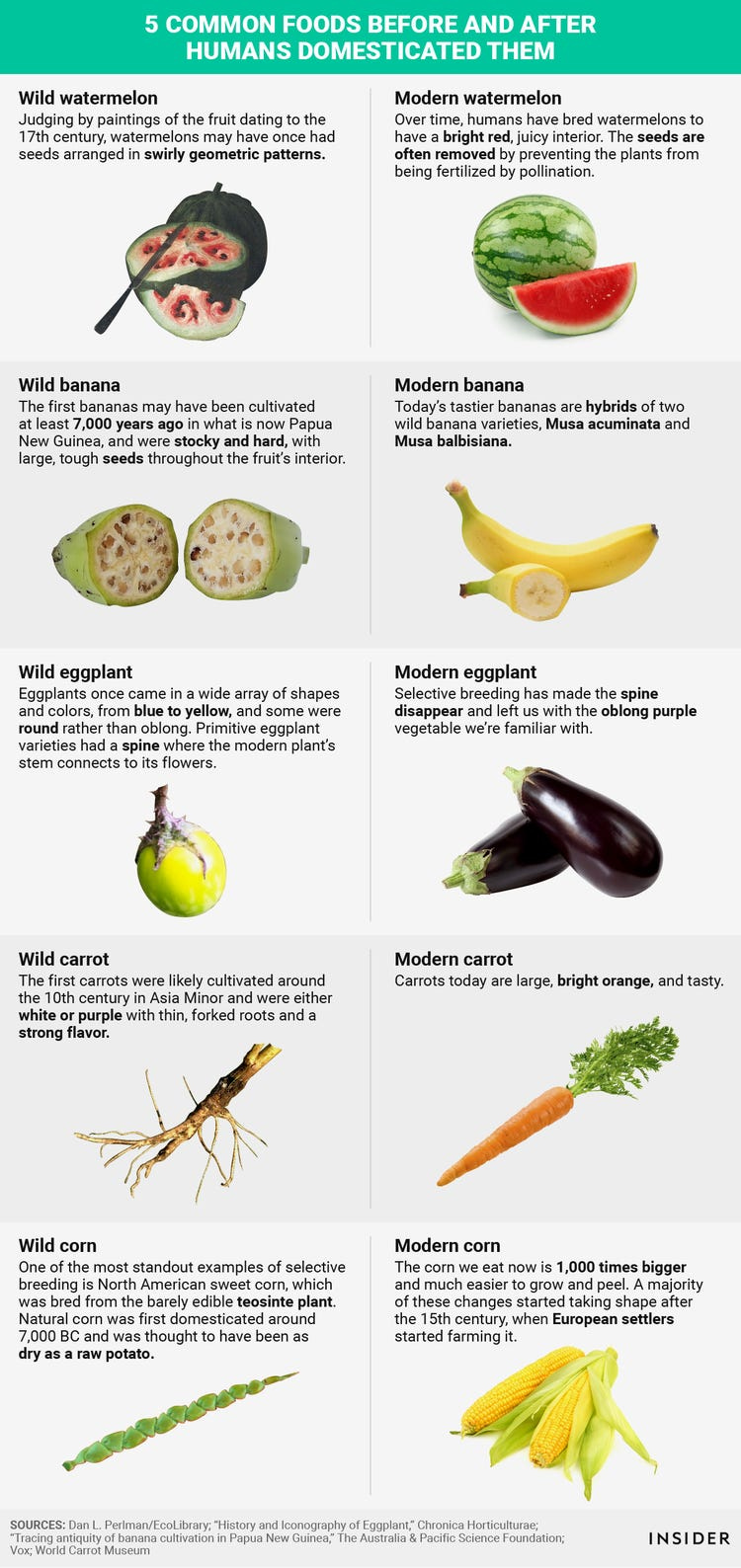 </figure>
</figure>By the way, the reason we can’t subsist on massive amounts of fiber like a gorilla is because we can’t perform anywhere near as much hindgut fermentation as them, so we can’t derive any meaningful amount of energy from fermenting plant foods like gorillas can. Gorillas can derive as much as 57% of their calories from just fermenting plant matter into short-chain fatty acids.(S)
<figure>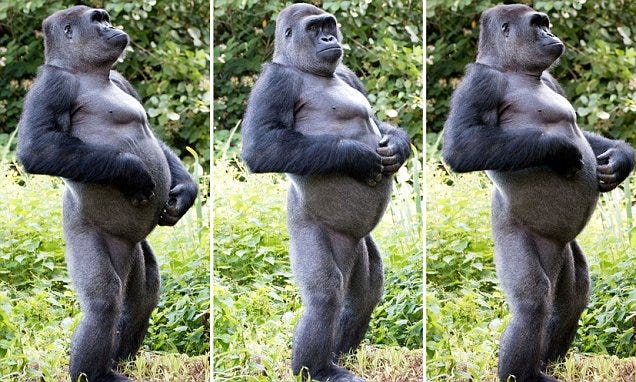 </figure>
</figure>So, considering this, the lessons from Weston Price, and the fact that animal foods have every single one of the nutrients humans need (assuming you eat nose-to-tail*) - animal foods are what’s being replaced. That is, a diet completely lacking animal foods is the experiment.
*Note: While I don’t think this is healthy and I think a nose-to-tail animal foods liberal diet containing some carbs from fruit, tubers or honey is a good bet for optimal… it seems many people can thrive on a muscle-meat-only diet for years without any deficiencies. (Nope, no scurvy) See the testimonials on carnivore.diet for more.
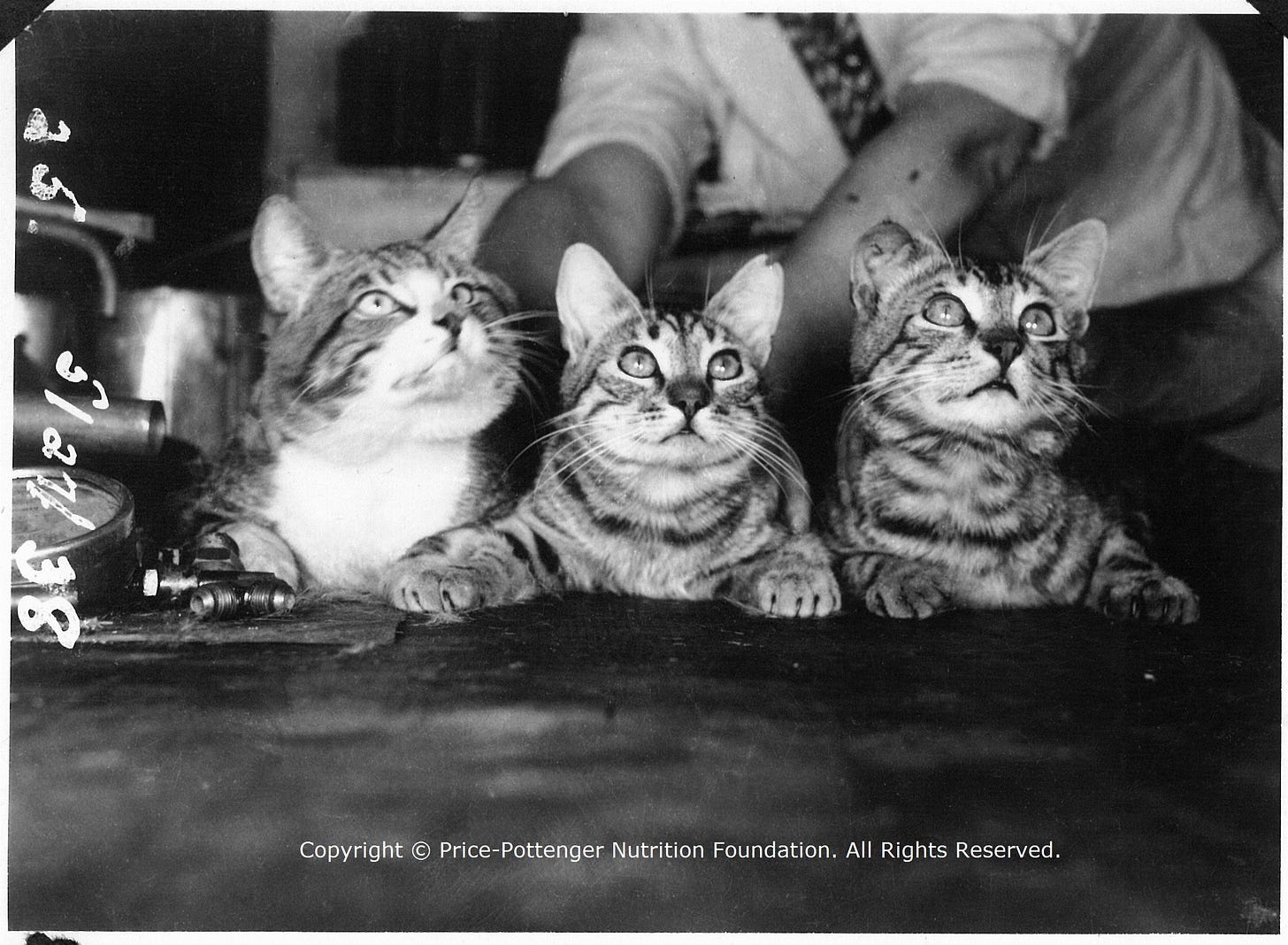 </figure>
</figure>But we are on modern diets, and we’re doing just fine!
Let me share one more story with you. In the years before 1932, Dr. Francis Pottenger was trying to formulate a diet for his laboratory cats that would keep them in good health - he thought he had all the components necessary for a proper cat diet - he fed them raw milk, cod liver oil and cooked meat scraps including all kinds of organ meats like liver and sweetbreads. Yet for some reason his cats on this diet still exhibited somewhat poor health and evidence of nutrient deficiencies. In the mean time, people were donating so many stray cats to his laboratory that he had to cut corners with the diet - he stopped feeding some of the cats cooked meat and just gave it to them raw. Within a few months these raw meat fed cats and their kittens were clearly healthier than the cooked meat fed cats and their kittens. This observation led Dr. Pottenger to conduct a 10 year study examining the effects of cooked meat versus raw meat on hundreds of cats. What he found was quite shocking - that although this deficient diet will lead to a more or less properly functioning cat that can go on to have kittens, the kittens will be born underweight, they will have brittle bones, their teeth will be crooked or crowded, they will have allergies, they will have a thyroid that doesn’t function properly - all these problems will then be even worse for the kittens of these cats. In fact, if these kittens go on to grow up and have their own kittens, they don’t survive more than 6 months. By the way there seemed to be some threshold of raw meat in the diet - if the diet was at least 50% raw, then the cats developed well. But the point is not to say that we should eat raw meat - we are not cats.
The point is that at first glance, this deficient diet seemed … OK. Sure the cats had some problems, but they were able to grow up and have kittens. However, it wasn’t until you monitored the health of their kittens and the kittens of those kittens that you see the full picture of just how deficient this diet was. In fact, by most objective measures we should have expected the cooked diet to have everything the cats needed. However, this one simple modification - cooking to what would otherwise be a perfectly natural diet for cats… was enough to rapidly degenerate their health. At the time, they didn’t exactly know why cooking would have such a negative effect on the nutritional adequacy of their diet. (In fact, another example of not understanding the extent of the importance of a natural diet - taurine wasn’t even mandated to be part of pet food until 1981.)
Based on his observations, Pottenger made the claim that we should expect not only our own food, but the health of our mothers and grandmothers to affect our own health. This logic seems to apply in the reverse direction as we saw with the steady increase in height in Dutch people over several generations. The height of American people has increased too, but it’s obvious that we are not experiencing more and more robust health year to year. In fact, just like Pottenger’s cats, our health seems to be worse with each generation. Something about the environment is leading to:
-An epidemic of crooked teeth. Dr. Sandra Kahn and Paul Ehrlich have written a book called Jaws: The Hidden Epidemic about the epidemic of small dental arches leading to crooked teeth & constricted airways, leading to breathing problems like sleep apnea that take a huge toll on health.
-A full quarter of women (26%) in the United States have trouble bringing a pregnancy to term.
-A tripling in peanut allergies
-Autism has increased 185 times from 1970 to 2020. (Rates went from 1:10,000 to 1:54)
-Prevalence of ADHD has steadily increased over the past 20 years.
-Incidence of depression in 12-25 year old has more than doubled since 2008. (Of course there are many environmental factors that can play into this like the mental burden of social media, not just diet.)
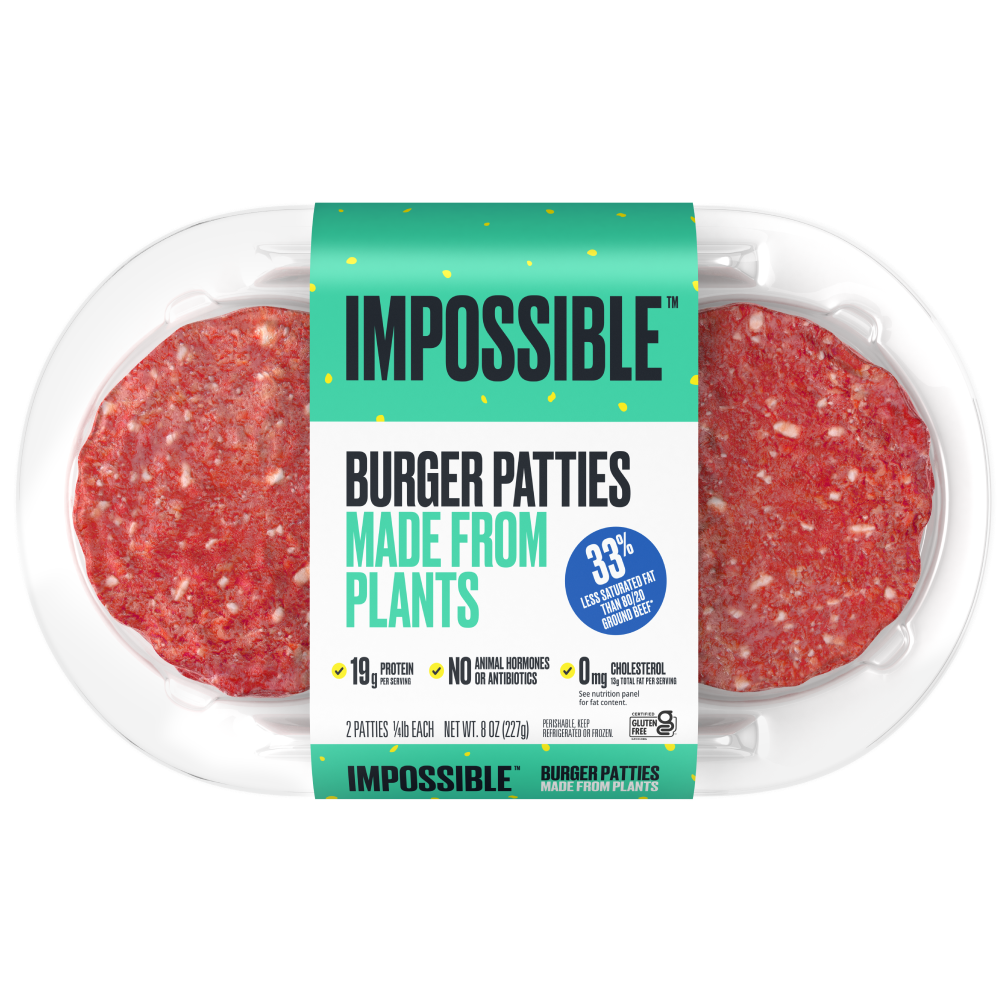 </figure>
</figure>Finally, let’s get back to fake meat
I hope I’ve sowed a seed of doubt in Ethan Brown’s claim that all you need to do to make ‘new meat’ is take all the components found in meat and then wack them into a meat looking patty. While it does seem Beyond Burger contains many nutrients that beef does, compared to beef, it’s still lacking carnitine, choline, carnosine, heme iron and selenium to name a few things. (By the way, if you’re allergic to peanuts, Beyond Burger is a no-go due to the pea protein they use.) Even if I were to point out that Impossible or Beyond Burger lacks this or that vitamin that meat has, obviously they could just add that in in the next iteration of the product. But they can’t put the more easily absorbed heme iron in there because that would render it no longer vegan, we’re not sure if the B12 added will actually effectively increase B12 levels as we discussed before, and as I’ve explained in my video Protein is not protein we should be wary of assuming plant proteins are a 1:1 replacement for animal proteins. Not to mention, science has revealed time and time again that we still don’t have the formula for every single component necessary to craft an optimal diet. Further, Beyond Burger has filled their patties with “heart healthy” canola oil. Remember how they had to increase the vitamin E content of those lab rats chow because they needed it to counteract the easily oxidizing vegetable oil in their diet? Well, that’s not the only reason why vegetable oils like canola oil are a pretty much toxic garbage. I don’t mean garbage as in I just don’t like it, I mean it should be handled like a waste product or perhaps machine lubricant. (If you’re curious about my disdain for vegetable oil, check out my video The $100 Billion Dollar Ingredient making your Food Toxic.)
<figure>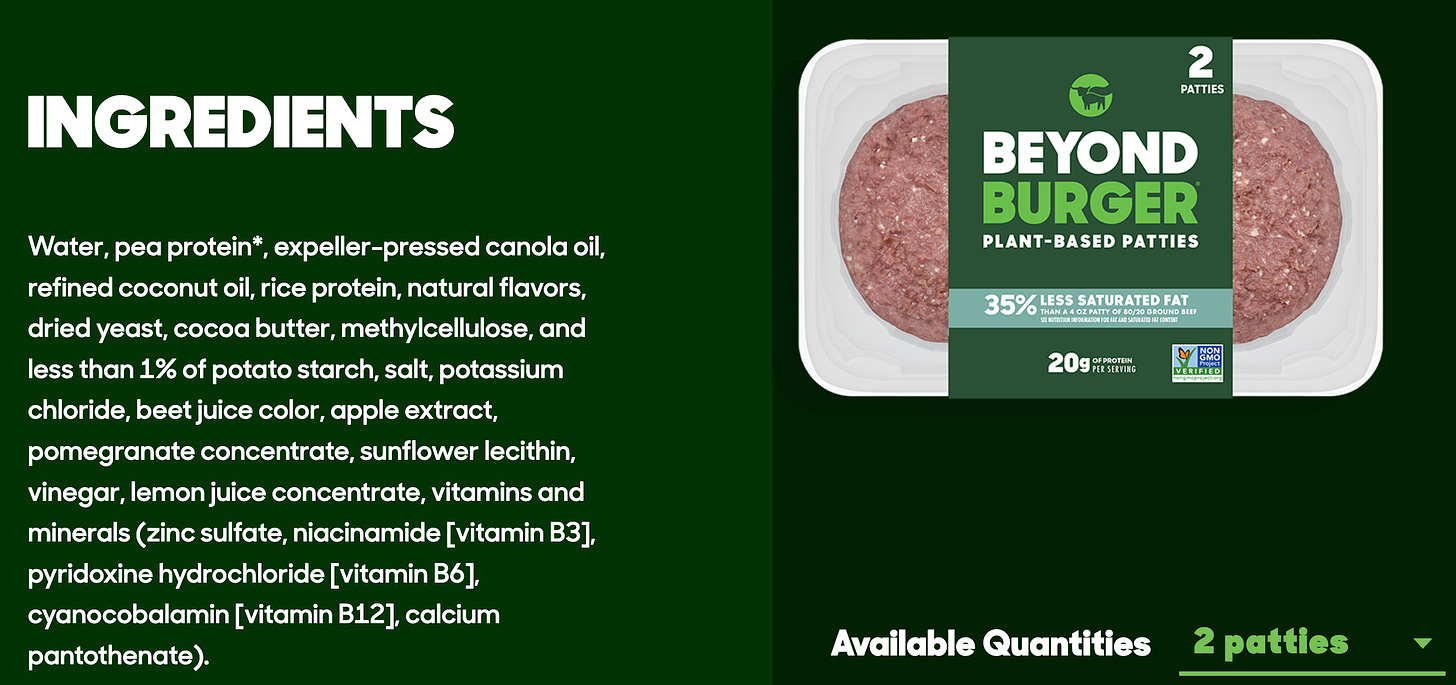 </figure>
</figure>This of course isn’t the only example of humans taking a look at natural product like meat and thinking “I can do better.” Impossible Burger’s big selling point is that they have ‘cracked the code’ to meat - they claim that what makes people claim meat is the heme iron in it. They figured that they would replace heme iron (an excellent natural package for a critical nutrient) with something new. What they came up with was leghemoglobin. This fake heme made their product look ‘bloody’ - just like a real burger.
<figure>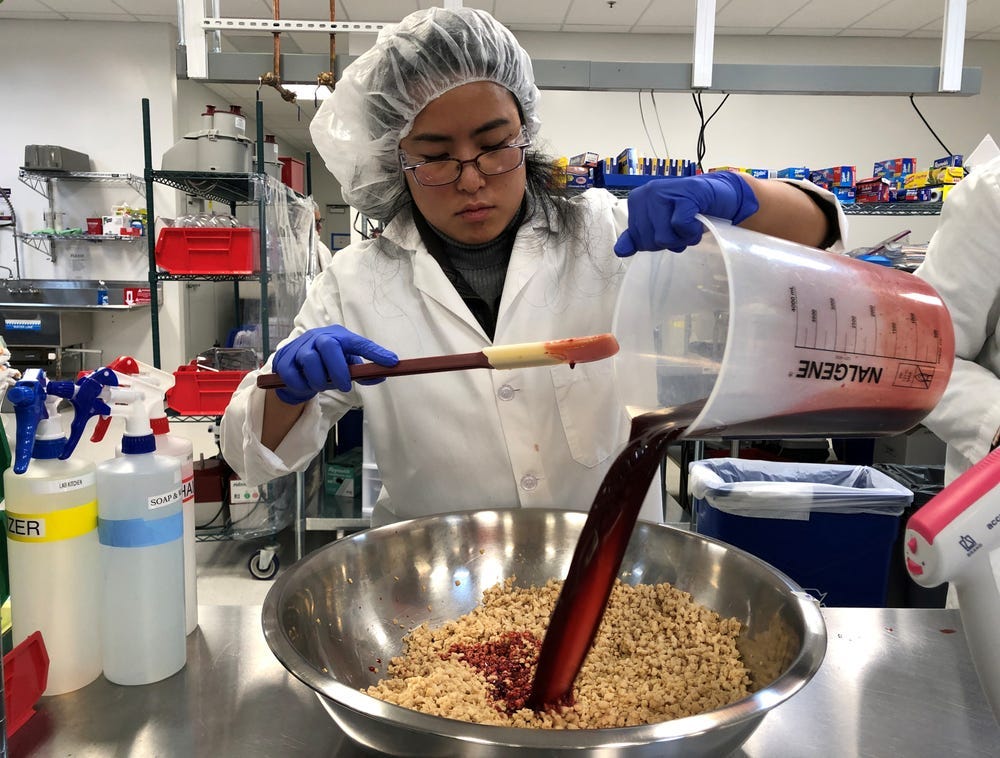 </figure>
</figure>Impossible’s leghemoglobin is genetically engineered from soy roots which are not normally eaten by humans. Science policy analyst at Center for Food Safety commented on this, saying:
FDA approved soy leghemoglobin even though it conducted none of the long-term animal studies that are needed to determine whether or not it harms human health," said Bill Freese, science policy analyst at Center for Food Safety.
An article from The Cornucopia Insitute, an organization dedicated to uncovering “the truth behind organic food and advocates for an organic label you can trust,” wrote in an article:
In discussion with FDA, Impossible Foods also admitted that up to a quarter of its “heme” ingredient was composed of 46 “unexpected” additional proteins, some of which are unidentified and none of which were assessed for safety in the dossier.
…The FDA told Impossible Foods that its burger was not going to meet government safety standards, and the company admitted it didn’t know all of its constituents. Yet it sold it anyway to thousands of unwitting consumers.
A letter for the FDA reads:
Information addressing the safe use of modified soy protein does not adequately address safe use of soybean leghemoglobin protein from the roots of the soybean plant in food.
Further, GMOscience.org writes in an article about soy leghemoglobin (SLH) that:
A new animal study commissioned by Impossible Foods in 2017 on the soy leghemoglobin (SLH) raises more concerns. The study, conducted over a period of only 28 days on an entire group of 80 rats (comprising 4 groups of 10 rats per sex per group), found that SLH caused statistically significant changes in weight gain, changes in the blood that can indicate the onset of inflammation or kidney disease, and possible signs of anaemia in the rats.
That’s only 28 days. The effects longer than that, we don’t know.
We also don’t know the extent of the effects of completely swapping animal protein for soy protein. Soy contains the isoflavonoid genistein, which studies show has “detrimental effects on the male reproductive system and on the progression and sustenance of pregnancy, with more pronounced adverse impact in males, particularly when exposed in utero” (s) For those able to breastfeed, that’s another reason not to opt for soy-based baby formula. It’s hard to find global consumption trends, but soybean consumption has gone up almost 6X in China since 1990.
<figure>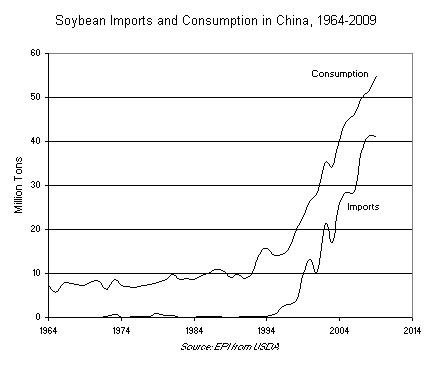 </figure>
</figure>What about Lab Grown meat?
Lab Grown meat is the most astonishingly impractical idea yet. I have never made a video titled something as blunt as X is a SCAM, but I just might do that for lab grown meat. In fact, I may just make a video about this so let me just give you the quick run down. If you’re interested in the full story, Joe Fassler of TheCounter.org wrote a long and excellent breakdown of just how insanely impractical scaling lab grown meat is. Much of the article is based on chemical engineering PhD David Humbird’s 100 page paper published in in June, 2021 in the journal Biotechnology & Bioengineering, titled Scale-up economics for cultured meat.
<figure>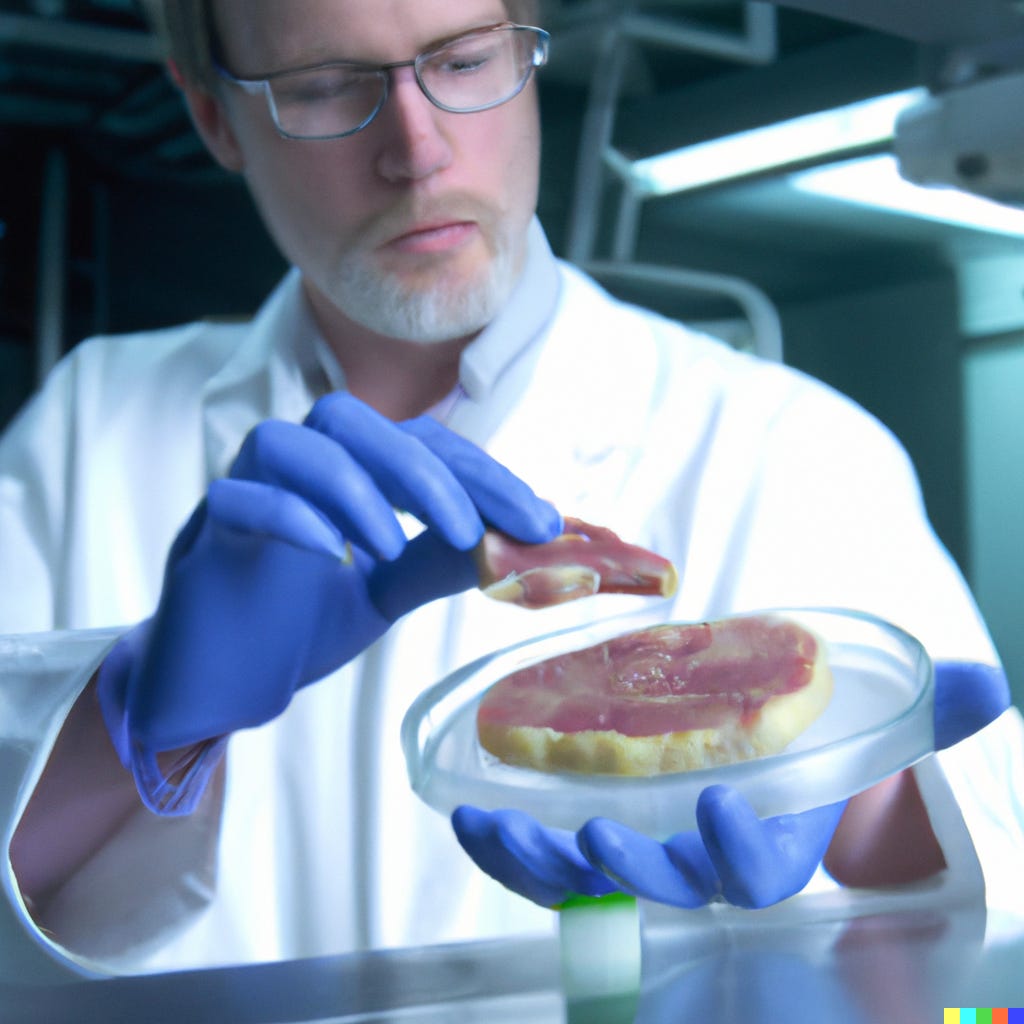 </figure>
</figure>Let me share just some of the points:
(1) The Good Food Institute is a nonprofit think tank focused on making plant-based and cultivated meat delicious, affordable, and accessible. GFI’s own life-cycle analysis found that cultivated meat could have worse climate impacts than some forms of chicken and pork if conventional energy is used.
Open Philanthropy—a multi-faceted research and investment entity with a nonprofit grant-making arm, which is also one of GFI’s biggest funders—completed a much more robust TEA of its own, one that concluded cell-cultured meat will likely never be a cost-competitive food.
(2) To capture even 10 percent of the world’s meat supply, 4,000 state-of-the-art factories would need to be constructed and this would cost $1.8 trillion dollars.
(3) Because even a single speck of bacteria can completely ruin an entire bioreactor full of cultivated meat, the production will need to take place in pristinely contamination-proof “clean rooms.” Humbird projected the need for a Class 8 clean room—an enclosed space where piped-in, purified oxygen blows away threatening particles as masked, hooded workers come in and out, likely through an airlock or sterile gowning room.
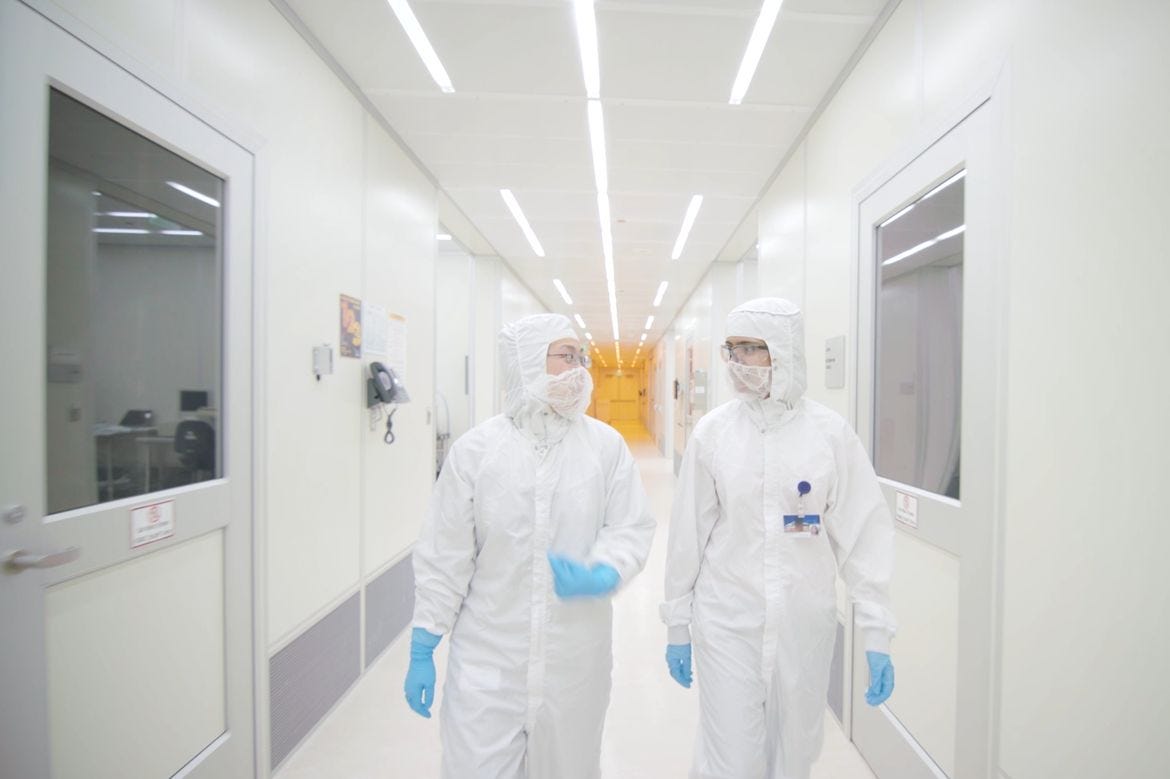 </figure>
</figure>(4) Just like other living animals, cultured cells will need amino acids to thrive. In Humbird’s projection, the cost of aminos alone ends up adding about $8 per pound of meat produced—already much more than the average cost of a pound of ground beef.
(5) To be efficient, the bioreactors for culturing the meat would need to be bigger and bigger. The problem with this is then you would have a very hard time providing all of the cells with the same amount of nutrients and oxygen.
The only solution is to stir the cells more rapidly, or blow more oxygen in—but both of these approaches can be fatal. Because they lack a rigid cell wall, animal cells are prone to “shear stress”; they’re fragile little things that can are easily torn apart by rising air bubbles, cell-to-cell collisions, and rotating impellers. This need for increased stirring and oxygen has historically put practical limits on bioreactor size—a problem that remains unsolved at scales well below what Tetrick envisions.
Appeal to nature fallacy
OK some of this might sound like your classic appeal to nature fallacy. Sure, just because something is old and “natural” doesn’t mean it’s better.
<figure> </figure>
</figure>Raw Water - Unfiltered, Untreated and Unsterilized. Very natural and very good way to get dysentary.
There has been a lot of discussion about the health detriments of very “unnatural” processed foods - but humans have technically been processing foods for a long time. In fact, the Weston Price foundation highlights the importance of fermented foods - a source of Vitamin K2. Weston Price observed himself that Hawaiians would ferment the tuber taro. In fact, we’ve been processing food for a very long time. The American colonies developed a vitamin B deficiency called pellagra because they didn’t understand the importance of “processing” corn - nixtalizing it like the Native Americans did.
So if you’re looking for a heuristic, rather than “nature is good, processed is bad” we can guess that usually, “track record is good.” We might come up with something like this:
<figure>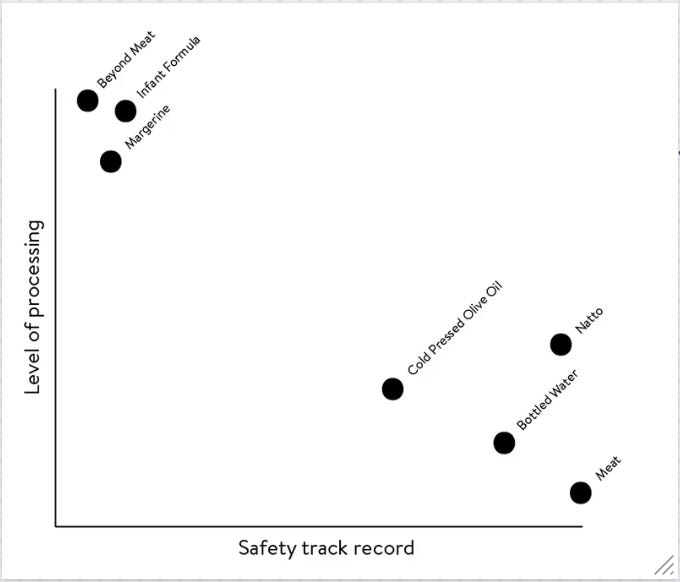 </figure>
</figure>Meat can be eaten raw, the most processing needed is whatever it takes to get it off the carcass. It has a very long track record - our existence is evidence of this. Not only did we survive, it seemed to be a vital component to keeping us remarkably robust. Pretty much any picture of Plains Indians of North America before modernization will reveal a fantastically broad faces that would give way to straight teeth complete with wisdom teeth and an optimal airway.
<figure>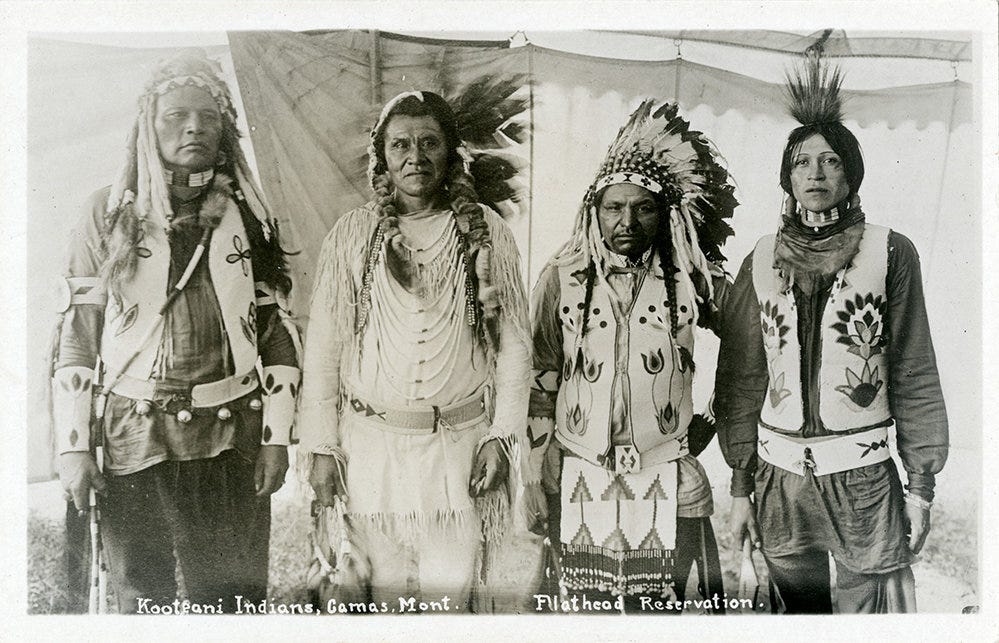 </figure>
</figure>They clearly valued animal foods, eating as much bison as they could; they preserved what they couldn’t eat in the form of jerky or pemmican. The Spanish explorer Francisco Vasquez de Coronado observed that “they empty a large gut and fill it with blood, and carry this around the neck to drink when they are thirsty.”
Fermented foods too have revealed themselves to be a processed food with a reliable track record. We might say whole vegetables have been “processed” (or tampered with) as they have been domesticated, but they have had a decent track record. Highly processed foods and vegetable oils have already amassed a very bad track record in their short tenure. Diets that completely lack animal products do not have much of a track record or even a decent one. In fact the diet couldn’t even have existed until after 1947. This is when the first B12 supplement started to take shape. Take a look at my post Is veganism healthy? Ask the ex vegans.
I can imagine one interesting counterpoint being that nature doesn’t really care about you - it wants you to reproduce as much as you can, and after that, once you’re too old / past reproductive age, nature is done with you. It hasn’t struggled for millions of years to learn how to make you live longer, it’s struggled to make you reproduce. So, living past 100 is quite unnatural. So why should we expect a natural diet to make us live unnaturally long? To live past 100, we need a diet that is even better than a natural diet.
Fair enough, there may be something to that. However, what makes you think we can make an unnatural diet that is even better optimized for longevity than a natural diet …when we clearly can’t even get a natural diet right? As mentioned already, we can’t even get dental health right. The problems of mouth breathing and sleep apnea compound over the years making us less robust, sicker, more prone to disease. Saying that we should forget about natural diets and jump straight to diets that are “better” for longevity is like saying we can make an amazing car by making the most hight-tech engine ever. But, you skipped the basics and your car is literally a square, so most of what that advanced engine is doing is struggling to fight against aerodynamics.
In short: Good luck with your square car (which by the way, doesn’t even have a good engine), Ethan Brown.
<figure>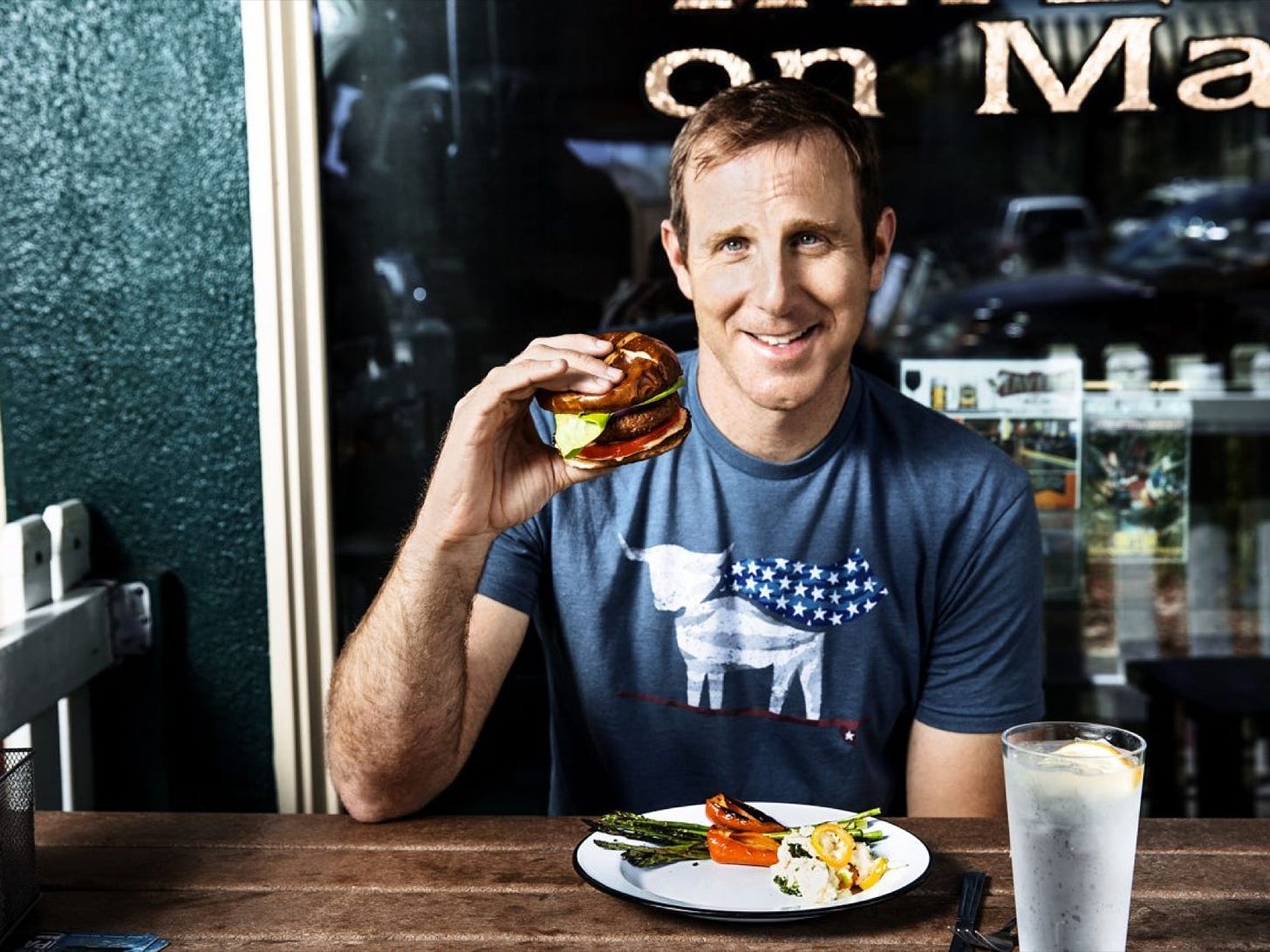 </figure>
</figure>